What is “Creation Science”? John MacArthur calls these two words together an Oxymoron: “In a sense, when you use the phrase ‘creation science,’ that’s an oxymoron” (MacArthur 2014).
When one thinks of “Creation” one typically thinks of “special creation” and the supernatural events that occurred during Creation Week. Science on the other hand, has nothing to do with supernaturalism. Science is concerned with testable hypotheses, and of course, is dependent on the immutability of natural laws. I mean, when you think about it, “creation” and “science” are about as different as chalk and cheese, and I can understand why John MacArthur views the two words together as a contradiction in terms.
The following article has been reblogged with permission from Creation Unfolding. The views expressed reflect those of the author, and not necessarily those of New Creation.
Given this distinction, how am I, as both a Christian and a scientist to apply science to the physical universe? In other words, what are the limitations of science for the Christian? To answer that question, I, as a Christian first and a scientist second, need to use the Bible as my ultimate authority. Science, although a powerful tool for understanding how the universe works, must always be viewed by Christians as an auxiliary source of evidence that submits itself to the personal testimony of God, the one who created science in the first place.
In a very real sense, personal testimony from the Bible is also evidence. It is true, it is not scientific evidence, but we nevertheless use this kind of evidence all the time in courts of law to put people in prison for a very long time. So, although it is not scientific evidence, it still remains a powerful form of persuasive evidence that can impact the way in which people live their lives. So, what does God say about the authority of science in matters of faith?
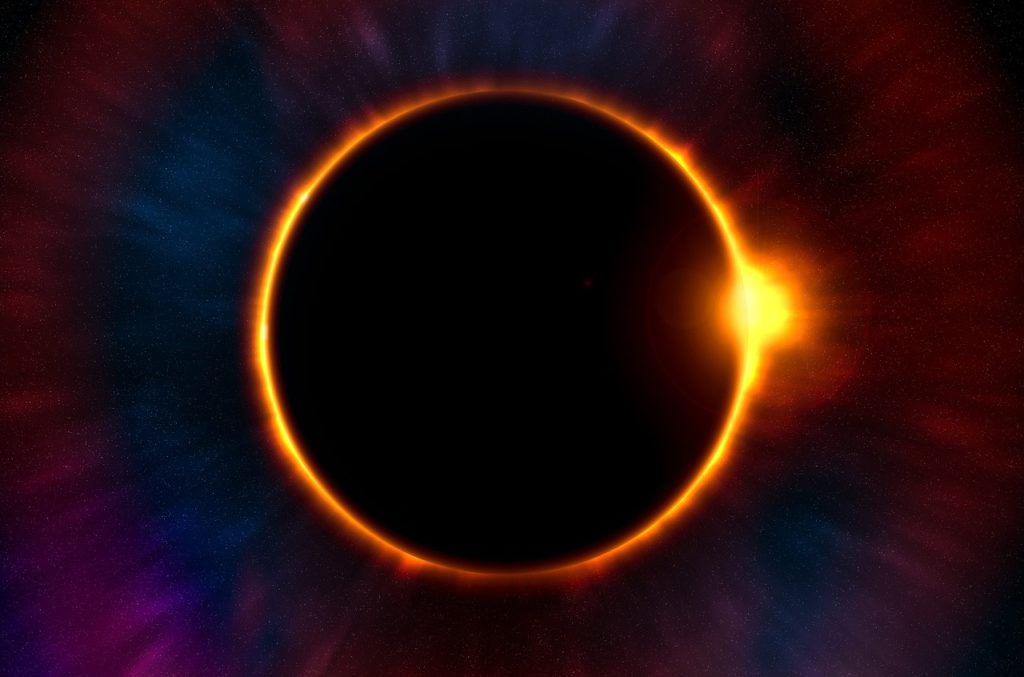
Well, you may be surprised to learn that God says we can learn many things about Him from science. The apostle Paul tells us: “For what can be known about God is plain to them, because God has shown it to them. For his invisible attributes, namely, his eternal power and divine nature, have been clearly perceived, ever since the creation of the world, in the things that have been made. So they are without excuse” Romans 1:19-20 (ESV). And David in the Psalms says: “The heavens declare the glory of God, and the sky above proclaims his handiwork” Psalm 19:1 (ESV). These Bible writers are talking about studying nature. That’s science. According to Scripture, the study of nature using science shows us that there is a grand architect, a designer, and thus a God. Great! Then what’s MacArthur’s beef about when he calls the phrase “creation science” an oxymoron? Well, here’s what he says next, “Science is a study of natural law; creation is supernatural. You can’t explain creation by any natural scientific method. It was the most massive supernatural miracle that ever took place.” You see MacArthur is making a distinction between the universe as it presently exists and the origin of the universe.
Consider, for example, the amazing process of the walking protein kinesin. This protein works much like a UPS delivery van ferrying bits and pieces of organic material across your cell on microtubule superhighways. But what is amazing is that it actually takes steps, much like humans do. Now, let me ask you a question. Is this process natural or supernatural? It’s completely natural. The kinesin nanomachine works by adhering to natural laws, not supernatural ones. Kinesin, and all of the wonderful architectural designs observed in our universe can be scientifically investigated because they belong to the physical universe as it presently exists and operates. In other words, God is naturally glorified when natural human beings investigate God’s very natural universe using the natural sciences. And in fact, God tells us this is indeed true in passages like Romans and Psalms. That’s great! So where is the conflict?
It comes when humans try to impose the natural sciences on the origin of the universe for the purpose of finding its age. This is MacArthur’s point when he says “creation is supernatural.” He doesn’t mean that the creation in and of itself is supernatural. What was supernatural was the act of bringing this universe into our historical context in six days. This supernatural “action” is, therefore, not scientifically accessible. And again, since I am a Christian and a scientist, I must ask myself what that means for me? Is the supernatural “act” of creation in anyway whatsoever scientifically detectible? And, of course, the answer should be no.
And this sort of brings me to the crux of the situation for modern creationism. You see, many creationists seem to believe that the supernatural “act” of creation can, in some way, be scientifically detected. This is a quote from a recent young-earth creationist (YEC) publication:
“If a person were given science tools but had no preconceived notions about the universe, would purely objective observations lead that person to believe in a billions-of-years-old earth and universe? By no means, since so many features look so young.”
Now, although they don’t say so explicitly, these creationists are implying that abundant scientific evidence exists supporting a 6000-year-old universe.
Some might argue that the age of the universe has nothing to with Creation Week, because 6000 years have passed naturally since its creation. But that is not strictly true. You see the “age” of the universe is tightly bound up with the way it was constructed. Consider the creation of a star that is 10 billion light years away from us. Humans use the current rate at which light travels to come up with this 10-billion-year-old number. In other words, using science and science alone, I would never conclude that the starlight from that star travelled to earth in only 6000 years.
The creation of our planet will now be used as example to bring this point home. From a YEC perspective, there are really only two ways to approach the formation of earth, and it really doesn’t matter which one is chosen as it won’t affect the conclusions. The traditional ex nihilo view is the most common whereby the planet was created fully formed out of nothing. And that’s a perfectly good rendering of Genesis 1. But there is another view making headway in creationism whereby God used processes to frame the earth (Coulson 2020). In this view, God creates unformed matter, and then sort of fashions it into a mature planet. But what do we mean by “mature?” Well, it certainly means that God made it with rivers, trees, and mountains, but what I mean goes even deeper than that and is related to the structure of the earth’s core, mantle, and crust.
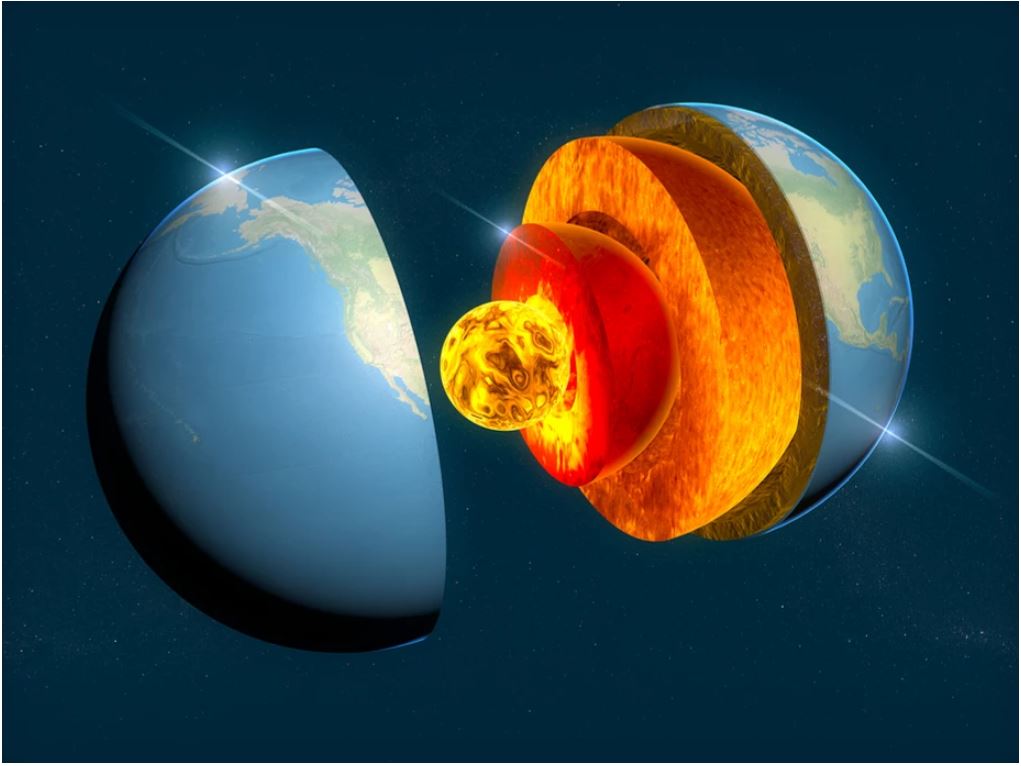
We all know that our planet has a core, mantle, and crust [Editor’s Note: see figure to the left], but have you ever wondered why the earth is broken into these three very distinctive parts? Secular scientists have been working on this observation for over 100 years and have come up with some very interesting conclusions based on scientific experiments. Heating mantle-like rock in the lab, for example, has allowed scientists to study the process of partial melting and gravitational differentiation. Partial melting works on the melting temperature of different minerals. Silica-rich minerals have a lower melting point. That means as the mantle heats up, quartz (a silica-rich mineral) will melt first. The heavier, metal-rich minerals will melt last or not at all if the temperature does not get high enough. What you end up with is a less dense, silica-rich fluid that eventually makes its way (“floats”) to the earth’s surface under the influence of gravity to become crust. Gravitational differentiation, although involved in the production of continental crust, is more involved in the formation of the earth’s dense core. Heavy elements, such as nickel and iron, typically do not migrate into the crust when they reach their melting points, but instead are drawn towards the earth’s center under the influence of gravity, hence the name, gravitational differentiation (separation: as in separating the core and the crust from the mantle). Crudely, we can think of these separate processes (partial melting and gravitational differentiation) as sort of working together to differentiate the earth into its three basic parts: core, mantle, crust.
So, this is what I mean by mature. Whether God spoke the earth into existence already stamped with these complex processes, or whether they operated at highly accelerated rates during Creation Week is immaterial. The end result is that you have a very complex planet that is stamped with vast amounts of processes. Having established this, I would now like to explain why the interpreted “age” of the universe is tightly bound up with the way it was constructed.

Image Credit: awmcphee – Own work, CC BY-SA 4.0, https://commons.wikimedia.org/w/index.php?curid=79973219
Imagine that 6000 years after the creation of the earth, a non-Christian scientist begins to investigate the crust for the purpose of determining its “age.” As he runs tests on the still existent supernaturally created crustal rocks of the earth (e.g., the Canadian Shield) what conclusions will he come to as to its “age”? Will he conclude that the crust came into existence in literally six days using science alone? Of course not. But why? Well, because it was miracle. This is why John MacArthur says, “You can’t explain creation by any natural scientific method. It was the most massive supernatural miracle that ever took place.” MacArthur goes on to say, “’Don’t we have to apply science to the Genesis account?’ And I say it again: you can’t apply science to a miracle; it’s impossible” (MacArthur 2014).
Let me use some other examples to push the point home. In John 2, we are told that Jesus turned ordinary water into drinkable wine. Imagine that we could get a glass of that wine to conduct tests on it, much like we can with the earth’s crust today. Using science alone, would I be able to detect its supernatural origin? Again, of course not. And I suspect that exactly the same thing would apply to the bread and the fish that Jesus supernaturally created as well. Applying science to these normal, natural objects would only return normal natural conclusions. Without being told, I would conclude that the bread was baked by people, in a style and using ingredients that were common to that vicinity. The fish would likely look like it had just been pulled from Lake Galilee and would therefore contain bones, organs, and DNA indicative of a fish that had grown from an egg and had a mummy and a daddy. To say that we can apply science to the universe to determine its “age,” which, as I said earlier is intricately tied to its construction would be a bit like applying science to Jesus’ wine, bread, and fish for the same purpose. The result would truly be an exercise in futility.
So, this obviously begs the question. How can I know about the “age” of the universe? Well, you need to be told. And then you need to believe what you are being told. And of course, this is made quite clear in the Bible. In Genesis 1:1 (ESV), God tells us, “In the beginning, God created the Heavens and the Earth.” He then describes a sequence of creative events and the time in which all of this occurred. It took literally six days. This is made just as explicit in Exodus 20:11 (ESV) where God says, “For in six days the Lord made heaven and earth, the sea, and all that is in them.”
Now let’s go back and look at this YEC quotation again:
“If a person were given science tools but had no preconceived notions about the universe, would purely objective observations lead that person to believe in a billions-of-years-old earth and universe? By no means, since so many features look so young.”
As we’ve just seen, however, you can’t apply science to most of the universe for the purpose of finding out how old it is because the universe was created miraculously. We only know how old it actually is because God told us, but that claim must be believed not scientifically evaluated. Secondly, based on many other biblical examples (bread, fish, wine, etc.) and using the perspicuity of Scripture, I would suspect that the universe and the earth should actually look very old. And let me clarify that statement. I have been accused of saying that God purposefully made the universe look old, as though He was sort of into the distressed look. This is absolutely untrue. I believe that the universe is stamped with vast amounts of processes because God’s creative strategy was to create a universe in literally six days. That’s a really big universe in a really tiny amount of time. Since humans naturally interpret processes in terms of time, they naturally assume that the earth is old, but that is not because God made it look old on purpose.
As it turns out, these conclusions are actually based on Scripture. In Hebrews we read:
“By Faith we understand that the universe was created by the word of God.”
Hebrews 11:3 (ESV)
Why did the writer to the Hebrews feel compelled to tell his hearers that they needed to have faith to believe that God made the universe? Is it not because the writer had read the book of Genesis and understood, even in his day, how utterly absurd it would be to conceive of the creation coming into existence in six days naturally? This would be a bit like giving you one of Jesus’ supernaturally created fish and telling you that that fish naturally came into existence as a fully formed adult in just a few seconds. That is, of course, absurd. Instead, I would tell you that you must believe that the fish was supernaturally created. This is essentially what the writer to the Hebrews is saying. I can just as easily replace the word “universe” in that verse with the words “bread,” fish,” and/or “wine.” In other words, we are not to rely on science to understand how these objects came into existence. And that is exactly what the writer to the Hebrews is trying to convey. Creation was a miracle and you must believe it.
Now, that leaves us with three final questions:
- Does this mean that young-earth creationism is a useless discipline?
- Is God lying?
- Can a Christian be an astrophysicist and/or an astronomer?
Let’s look at the first objection: is young-earth creationism, and especially the “young-earth” perspective, a useless discipline given all that’s been said above? And, of course, the answer is no. Creationists have the great privilege of studying every facet of God’s amazing creation from the tiniest of biological nanomachines to the mathematically wondrous, and symmetrically consistent nature of the universe.
Research specific to a “young-earth” is also still relevant. Since the end of Creation Week, the earth has experienced natural rhythms taking place at normal rates of change. This means that all large-scale processes operating from the end of Creation Week till the present should be interpreted using normal scientific methods of research. Consider the dinosaurs as an example. Since dinosaurs lived and died after Creation Week, their remains should contain evidence supporting a 6000-year-old biosphere; and they do. For many decades now, scientists have been finding all kinds of soft tissues, including remnants of DNA in dinosaur bones. Such findings accord extremely well with a 6000-year-old biosphere, but completely confound a secular view. This is just one example of many, whereby young-earth creationism accords with the scientific data, and why scientific research from a young-earth perspective is still relevant.
The second objection is chiefly used by old-earth creationists (OEC) and/or theistic evolutionists. Old earth creationist, Rich Deem (2013), explains:
Here is where the appearance of age argument distorts the reality of God’s creation. Since we know that objects in the universe are 13 billion years away, it must have taken the light 13 billion years to reach us. Therefore, the universe must be at least 13 billion years old. Either God created the universe at least 13 billion years ago or He deceived us by making it seem to be 13 billion years old.
Deem, R. 2013. “Appearance of Age. A Young Earth Problem.” Accessed March 14, 2019. http://www.godandscience.org/youngearth/appearance.html
First of all, this objection ignores the very words of God, “For in six days the Lord made heaven and earth, the sea, and all that is in them” (Exodus 20:11 ESV). How clear can God be? God could only be lying to us if He failed to tell us these things. But He has, and quite explicitly! Secondly, this objection ignores the perspicuity of Scripture and the many examples of supernaturally created objects that retained the natural histories of their naturally formed counterparts. Some of these have been outlined above, but here’s an example that I think is pertinent.
Consider the miracle of the incarnation and the biological constituents of Jesus’ DNA. Jesus is fully God, but he is also fully human: “For this reason he had to be made like them, fully human in every way, in order that he might become a merciful and faithful high priest in service to God, and that he might make atonement for the sins of the people” (Hebrews 2:17 NIV; emphasis mine). We should assume, therefore, that Jesus would have diploid somatic cells (two sets of chromosomes, one from the father and one from the mother), just like all other humans. This theological observation becomes scientifically verifiable when one considers Jesus’ gender; Jesus is a male (having a Y chromosome), and since he was born without the aid of a biological father (the source of Y chromosomes), then his very normal genetic makeup resulted from a miracle well beyond our comprehension.

Now consider a scenario whereby an OEC or a theistic evolutionist is witnessing to an unbelieving scientist about the virgin birth, and imagine that the unregenerate scientist barks back with the following observation, “how can Jesus be virgin born? He is a male and therefore, according to the dictates of science, must have had a biological father.” How should our OEC or theistic evolutionist respond to such an objection? More than likely they will tell their skeptical friend that he must take God at His word, despite what the scientific evidence seems to suggest. In other words, even though Jesus has a Y chromosome indicative of a natural biological history, God is not deceiving us about the virgin birth because He told us about it. Why are OEC and theistic evolutionists willing to believe in the supernatural history associated with Jesus’ DNA, but not the supernatural history woven into the universe?
In actuality, God is deceiving us if the universe indeed is billions of years old. If these large timeframes are representative of our historical context, then the accounts presented in Genesis 1 and Exodus 20 are false. This brings the “deception” accusation full circle. Either the account found in Genesis 1 is historically accurate, or God is lying to us. This time, however, the deception is found not in vague natural science, but in easily understood propositional truths.
Now to the third objection: can a creationist Christian be an astrophysicist or an astronomer? In other words, since God supernaturally created the universe, can I apply the scientific method to the universe for the purpose of understanding how it works? And the answer is, of course, yes. Why? Because the universe is a natural object like any other object Jesus supernaturally created and/or altered.
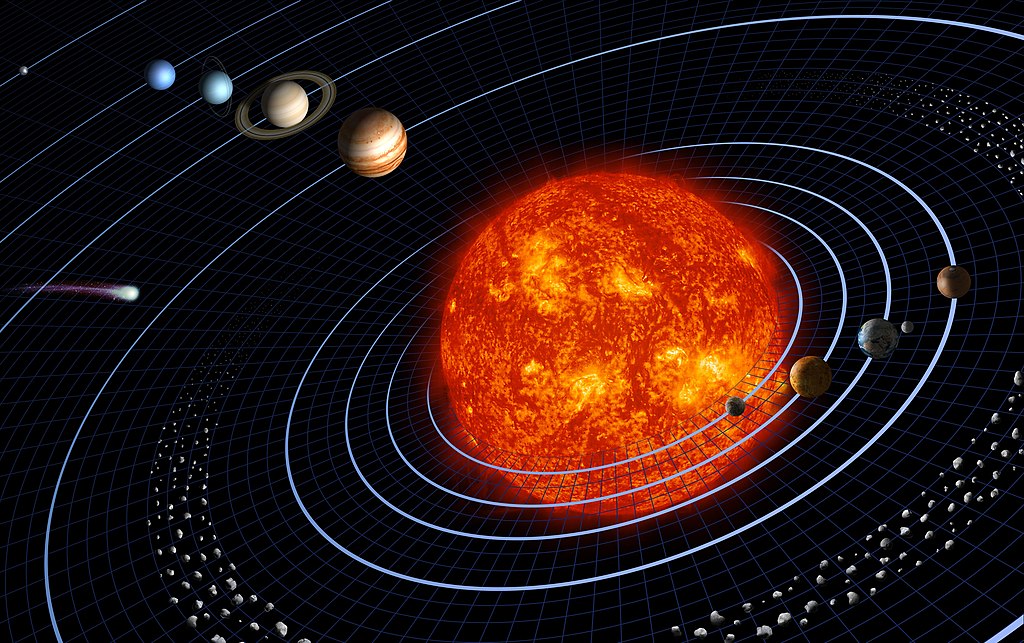
Now, the deep thinker might object and say that the universe is developing and expanding. And, in fact, that is the case. Danny Faulkner of Answers in Genesis says, “Cosmic expansion is the most straightforward interpretation of the Hubble relation” (Faulkner 2018, p. 38). This is the position of many young-earth creationists. This doesn’t mean they believe in the Big Bang, but they do accept a large-scale expansion of the universe. Given this, scientists can predict the future movements of extraterrestrial bodies using science, and they can use the same science to extrapolate that motion backwards. But how can the creationist astrophysicist do that since virtually no movement occurs on a cosmic scale in only 6000 years? In other words, modern astronomers can use science to predict, for example, where entire galaxies will be in tens of millions of years, and they can use the same science to predict where these galaxies were tens of millions of years in the past. Creationist astronomers, however, are limited by the miracle of creation that occurred about 6000 years ago and so have their scientific hands tied, so to speak, when trying to describe the historical development of our universe.

But I don’t think it has to be this way. Consider Jesus’ fish. These fish were not unique, based as they were, on a pre-existing natural design—the two fish from which they were derived. Jesus’ supernaturally created fish would, therefore, be imbued with the same time-dependent, developmental history that characterized their natural counterparts.
The same was true of Adam’s developmental history. Think about it; God could have created Adam as a young boy, a toddler, or even a baby. The reason we automatically affirm this possibility is because we know that the creation of fully mature organisms was not God’s providential intention. God designed humans, for example, to go through a natural process of maturation, starting life as a zygote, then developing into a fetus, progressing through various stages of infancy, childhood, pre-pubescence and pubescence before becoming a mature adult.
Yet where (or when) was this developmental design conceived? It certainly was not after God created Adam. Surely, God had designed all the different phases of human development before a single biological cell had sprung into existence. In other words, the entire life cycle of humans—from conception to death, was not only built into our genetic make-up, it was also designed by God in eternity past before Adam was even created (see figure).
That God uses pre-existing designs is quite explicit in Scripture. Consider the man-made tabernacle that was patterned on a pre-existing archetype in heaven. The writer to the Hebrews (9:23 ESV) says, “Thus it was necessary for the copies of the heavenly things to be purified with these rites, but the heavenly things themselves with better sacrifices than these.” Clearly some kind of spiritual tabernacle existed in heaven before the earthly tabernacle upon which it was patterned was ever even built. These verses reveal a fundamentally divine methodology that could easily correspond to all aspects of God’s creation—God uses patterns much like humans do when constructing things.
And now we have a philosophical framework from which to answer our deep thinker. If a normal, natural, developmental history for a mature Adam can be extrapolated backwards into the very mind of God, which assuredly must be the case, then why can’t a normal, natural, developmental history for a mature universe likewise be extrapolated backwards into the mind of God? (See both figures depicting this below).
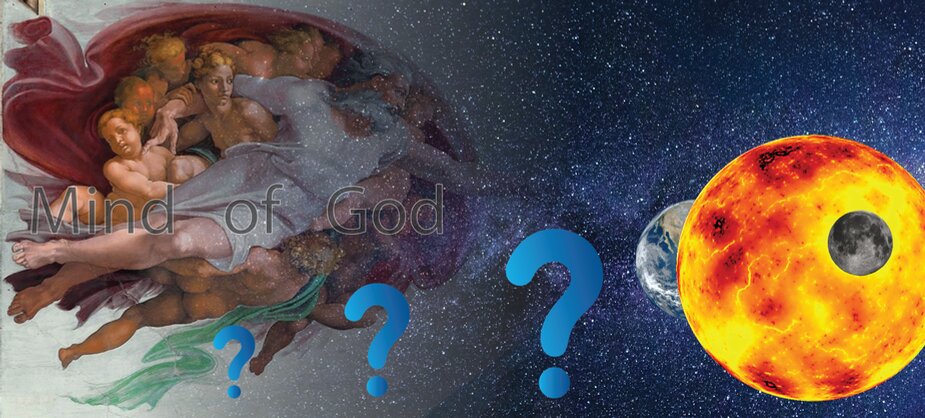

So, where’s the miracle? If the supernaturally created fish, Adam, and the universe contain natural histories indicative of natural processes, then in what sense did God perform a miracle? And that is a great question. The miracle, as I stated above, is not in the objects, it is in the “act” of bringing those objects into our historical context. The miracle of creation is that God took those things which were “unseen” and “spoke” them into our existence (Heb 11:3). This took literally six days, and it all occurred 6000 years ago. THAT’s the miracle. As such, this supernatural act cannot be scientifically investigated, it can only be believed (Heb 11:3). On the other hand, the universe as a developing entity can be scientifically investigated since it is a natural object.
And it is here, in this dichotomy of a miracle on the one hand, and a completely natural universe on the other, that faith and science really converge and make sense.
Footnotes
Deem, R. 2013. “Appearance of Age. A Young Earth Problem.” Accessed March 14, 2019. http://www.godandscience.org/youngearth/appearance.html
Coulson, K.P. 2020. Creation Unfolding: A New Perspective on Ex Nihilo. Phaneros Press, pp. 192
Faulkner, D.R. 2018b. “The Current State of Creation Astronomy II.” In Proceedings of the Eighth International Conferenceon Creationism, edited by J.H. Whitmore, 36 – 45. Pittsburgh, Pennsylvania: Creation Science Fellowship.
MacArthur, J.F. 2014. “Straight Answers About Creation.” Grace to You. Accessed 5/4/21, https://www.gty.org/library/sermons-library/GTY148/straight-answers-about-creation
Moskowitz, C. 2011. “What’s 96 Percent of the Universe Made Of? Astronomers Don’t Know.” Accessed July 5, 2019. https://www.space.com/11642-dark-matter-dark-energy-4-


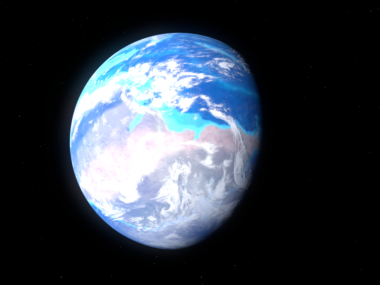
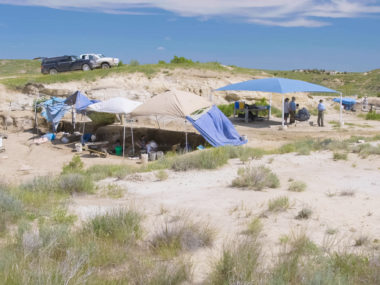

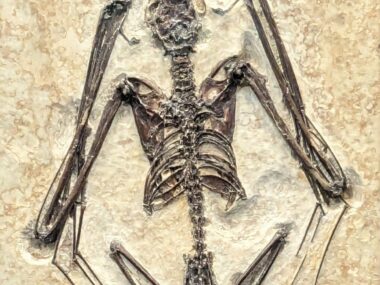






Hits a lot of good points. Indeed the earth/universe does not look old but beat up. One can’t tell the difference anyways.
Creation science is simply using scientific methodology to demonstrate God/Genesis are true, or likely, or a option, and any criticisms of this can be debunked. likewise Creationism can debunk any ideas other then God/Genesis. its about using human intellect to back up a witness of the bible and creation as evidence of a creator. Then taking on all comers.
Doesn’t Apostle Paul claim that it is General Revelation that makes the possibility of miracles self-evident (Romans 1:20)?
I don’t think the author would deny this. General revelation does indeed bear witness to the infinite power of God, which logically implies that He is free to do miracles and act outside the boundaries of the laws that He established to govern the universe in its ordinary operations. What general revelation does not reveal is that a particular miracle has in fact taken place. That must be learned by special revelation. For example, there was nothing about the wine that Jesus made for the wedding of Cana in Galilee that would have indicated that it had a supernatural origin. In itself, it was like any other wine– fermented grape juice which, through the lenses of naturalism, would appear yo be the product of natural processes over considerable time. Its supernatural origin could be known only by special revelation.